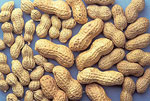 In this time of emphasis on the culture of health, there are many environmental affects that can determine the health of consumers.
In this time of emphasis on the culture of health, there are many environmental affects that can determine the health of consumers.
To help track data related to environmental public health, the Kansas Department of Health and Environment has a tracking network that brings together data concerning some health and environmental problems. The bottom line goal is to improve where all Kansans live, work, and play.
This tracking network is a part of the CDC’s National Environmental Public Health Tracking program. The CDC provides funds to 26 state and local health departments to feed date into the National Tracking Network.
Some of the topics addressed by this network in Kansas include:
- Air quality
- Lead exposure in children
- Asthma hospitalizations
- Cancer incidence rates
- Carbon monoxide poisoning hospitalizations
Learn more at https://keap.kdhe.state.ks.us/Ephtm/Default




